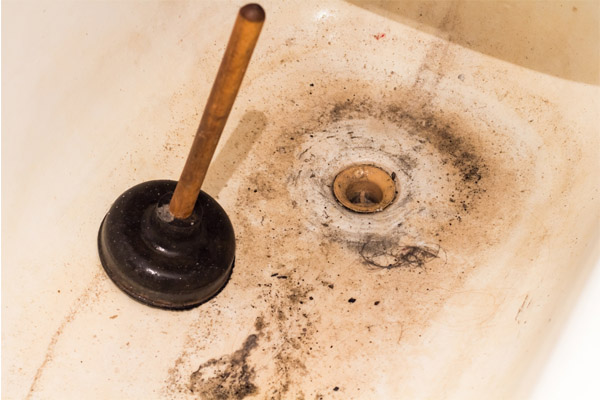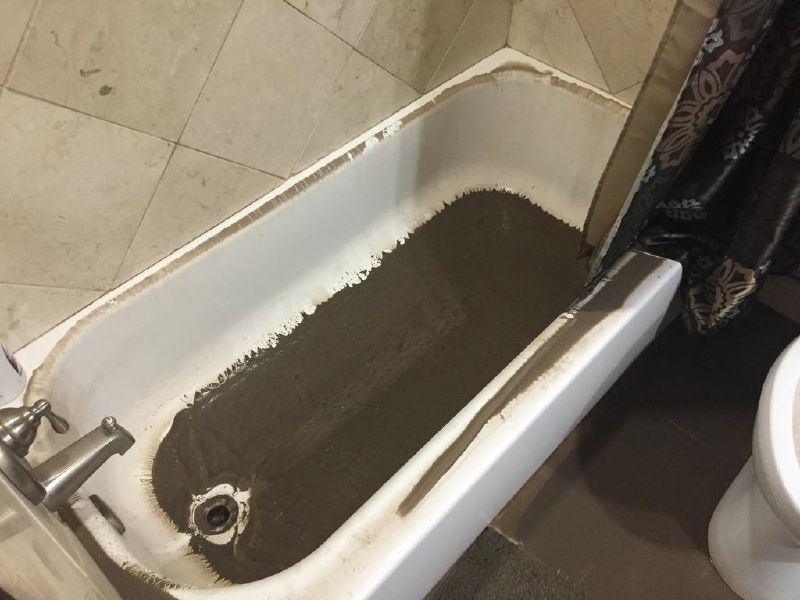Causes for Discharge Rising Through the Bathtub
Causes for Discharge Rising Through the Bathtub
Blog Article
What are your concepts about Why is There Sewage Coming Up Through the Bathtub?

Sewage back-up in the bathtub can be a distressing and unhygienic problem for any type of home owner. Not just is it bothersome, but it additionally poses severe health dangers and indicates underlying concerns with the plumbing system. Recognizing why sewage is showing up via the bathtub is important for taking appropriate activity to address the issue successfully.
Introduction to the Problem
Usual Factors for Sewage Back-up
Clogs in the Sewer Line
Among one of the most usual sources of sewer backup is a blockage in the drain line. This can occur due to the build-up of debris, grease, or international items in the pipelines, preventing correct circulation and triggering sewage to back up right into your tub.
Tree Root Breach
Tree origins looking for moisture and nutrients can penetrate sewer lines through tiny cracks or joints. With time, these origins can expand and increase, causing significant damages to the pipelines and causing sewer back-up issues.
Comprehending the Problem
When sewer draws back up into the tub, it's a clear sign of an issue with the drainage system. The wastewater that needs to be streaming far from your home is rather finding its way back right into your living space, which can bring about significant damages and health hazards.
Prospective Causes
Several factors can add to sewer backup in the tub. From blockages in the sewage system line to concerns with the plumbing facilities, recognizing the origin is essential for locating a remedy.
Aging Infrastructure
Older homes might have outdated plumbing systems that are more susceptible to deterioration, cracks, and damage. As pipes age, they come to be much more susceptible to leaks and clogs, enhancing the possibility of sewer backup cases.
Heavy Rainfall or Flooding
Throughout durations of heavy rainfall or flooding, the sewer system might become overwhelmed with excess water, causing backups and overflows. This can cause sewage backing up right into bathtubs and other components inside the home.
Indicators of Sewage Back-up
Foul Odors
Unpleasant smells emanating from drains pipes or fixtures, particularly in the bathroom, may show sewage back-up issues. These odors are often solid and relentless, signifying a problem that needs immediate attention.
Slow Draining Fixtures
Tubs, sinks, and toilets that drain gradually or not in all could be experiencing sewer backup. If multiple components are impacted all at once, it's most likely that the problem originates from a typical factor, such as the major drain line.
Gurgling Sounds
Weird gurgling or gurgling noises coming from drains pipes when water is running check here elsewhere in your house are a measure of air entraped in the plumbing system. This air accumulation can result from sewage back-up and ought to be checked out quickly.
Health Risks Related To Sewer Back-up
Contamination of Water
Sewer backup can infect the supply of water in your home, presenting a major wellness risk to you and your family. Exposure to infected water can cause gastrointestinal issues, skin infections, and other health problems.
Mold and mildew Development
Moisture from sewer backup can produce perfect problems for mold and mildew growth in your home. Mold spores can worsen respiratory troubles and create allergic reactions in delicate people, making prompt cleaning essential.
Spread of Illness
Sewage includes hazardous bacteria, viruses, and bloodsuckers that can cause a range of conditions, including hepatitis, cholera, and gastroenteritis. Coming into contact with sewer or infected surface areas places you in jeopardy of infection.
Cleaning Up After Sewage Back-up
Sanitation Procedures
Extensively disinfect and sterilize affected areas after sewage backup to get rid of hazardous bacteria and stop mold development. Use appropriate cleansing items and protective equipment to ensure risk-free and efficient cleaning.
Reconstruction of Influenced Locations
Fix any type of damage to floor covering, wall surfaces, or fixtures brought on by sewage backup. Depending on the degree of the damage, you might need to replace carpeting, drywall, or various other products to restore your home to its pre-loss problem.
Immediate Actions to Take
Switching Off Supply Of Water
In the event of sewage back-up, it's important to shut off the water system to avoid further contamination and damages. Find the primary water shutoff valve in your house and closed it off up until the problem can be solved.
Contacting an Expert Plumber
Dealing with sewage backup is not a DIY job. Call a licensed plumber with experience in managing sewage-related problems to analyze the scenario and carry out essential repair services or cleanings.
Staying Clear Of Contact with Contaminated Water
Up until the sewer back-up is solved, stay clear of contact with infected water to prevent the spread of germs and pathogens. Wear protective equipment if you must be in the affected area and wash your hands completely afterward.
Preventive Measures
Regular Upkeep of Drain Lines
Set up routine evaluations and maintenance of your sewer lines to recognize and address prospective concerns before they escalate into significant problems. This can consist of cleaning particles, checking for tree origin invasion, and fixing any type of damaged pipes.
Setting Up Backwater Shutoffs
Consider mounting bayou shutoffs in your plumbing system to avoid sewer from receding right into your home during periods of heavy rainfall or flooding. These shutoffs immediately close when water draws back up, shielding your building from contamination.
Correct Disposal of Home Waste
Avoid purging anything aside from bathroom tissue and human waste down the commode to stop clogs and obstructions in the sewage system line. Dispose of oil, oil, and other home chemicals effectively to decrease the threat of plumbing issues.
Why Is Water Backing Up in My Bathtub When I Flush My Toilet?
What to do about a sewer line clog
First, don’t bother with plunging. No amount of plunging will dislodge the clog in a sewer line. The clog is too far away. Plungers are for clogs in the toilet itself, not the sewer line. Plus, the most likely causes of a sewer clog are:
Tree roots Flushed toys or feminine products Grease buildup Those items don’t move easily. And in the case of tree roots, the roots need to be cut out of the pipe and the pipe will need to be repaired.
You’ll need a closet auger. A closet auger is a type of plumber’s snake with a protective cover to keep from scratching the delicate porcelain toilet. If the clog is further down, you may need to remove the toilet or use one of your cleanouts to get to the clog.
We also recommend doing a video inspection of the drain to ensure that the cause of the clog has been completely removed. Otherwise, you could have the same problem again in a few days or weeks.
https://mspplumbingheatingair.com/blog/why-is-water-backing-up-in-my-bathtub-when-i-flush-my-toilet

I'm certainly very intrigued by What To Do If Sewage Starts Backing Up Into the Shower and I'm hoping you appreciated the entry. Loved our entry? Please quickly share it. Let others discover it. I am grateful for your time. Don't forget to visit our blog back soon.
Visit Homepage
Report this page